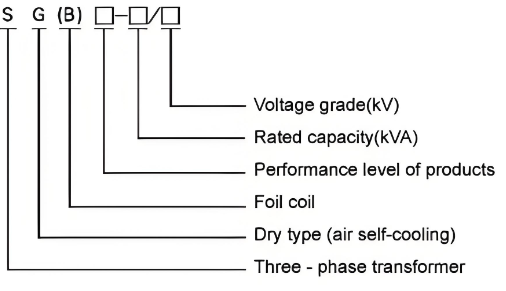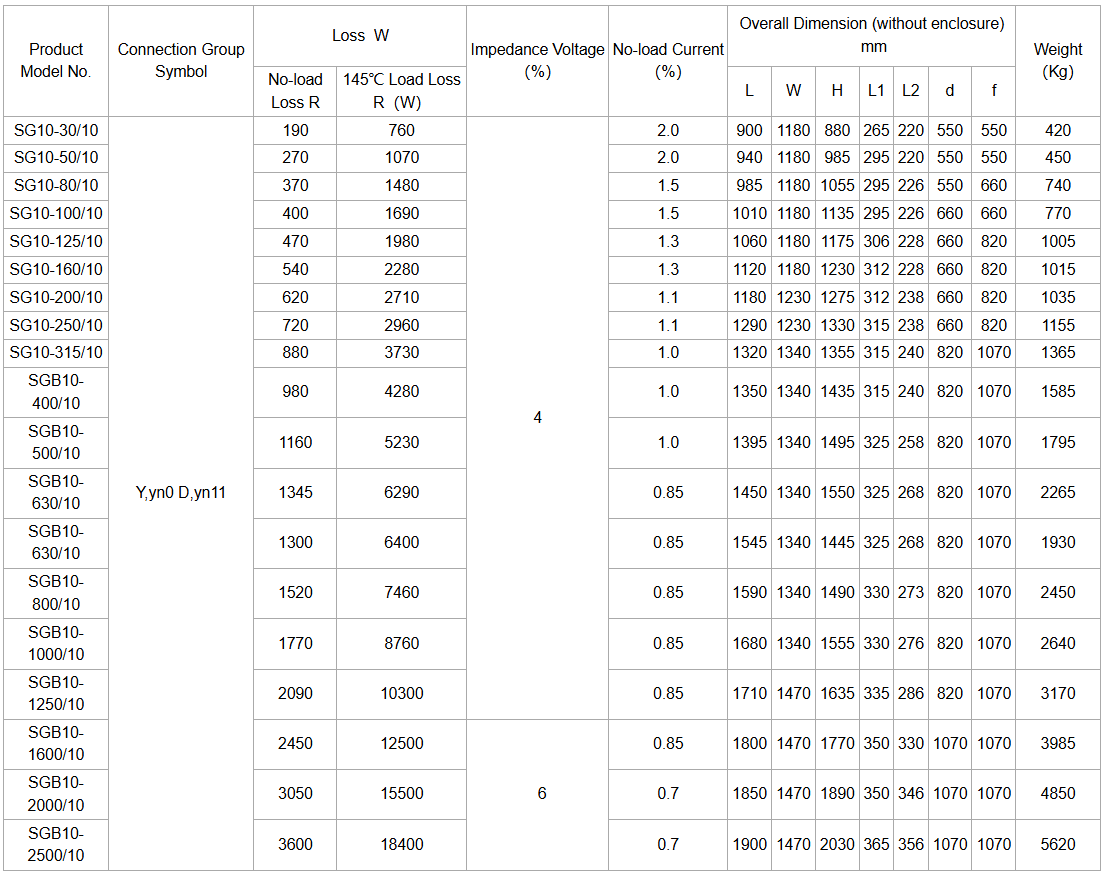| Brand | Vziman |
| Model NO. | Non-encapsulated H-class Dry-type Power Transformers 800KVA 1000KVA 1250KVA 1600KVA 2000KVA 2500KVA |
| Rated capacity | 2500kVA |
| Voltage grade | 10KV |
| Series | SGB |
Description:
The SG(B)10 series non-encapsulated H-class dry-type power transformers integrate German (MORA) dry-type transformer process technology, ensuring full compliance with fireproof, waterproof, and environmental protection standards. Engineered as ideal solutions for distribution systems, they excel in safety-critical applications, including subways, shipbuilding, mining, chemical industries, power utilities, and personnel-dense buildings, as well as environments with special safety requirements.
Feature
Maintenance-free Design: The non-encapsulated windings allow direct visual inspection, eliminating the need for preventive tests. This extends the maintenance cycle to 5 years and reduces the full life-cycle cost by 30%.
Intelligent Monitoring Integration: Equipped with built-in winding temperature sensors and RS485 communication interfaces, it supports remote monitoring and early warning. The fault response time is shortened to seconds, significantly reducing operational and maintenance costs.
Superior Insulation and Heat Dissipation Performance: Adopts H-class insulation materials (temperature resistance up to 180℃), combined with non-encapsulated open-winding design, which enhances heat dissipation efficiency by 30%. It can stably operate under 150% rated capacity overload, perfectly suitable for high-load fluctuation working conditions.
Model and Meaning:

Parameter:

Notes: The Dimension and weight will be changed according to the requirements.
What is an Unencapsulated Class H Dry-Type Power Transformer?
Non-encapsulated: It means that the coils of the transformer are not subjected to the traditional encapsulation treatment but are directly exposed to the air. This design can improve the heat dissipation efficiency and extend the service life.
H-Class Insulation: H-Class insulation materials refer to those insulation materials that can withstand a maximum temperature of 180°C. They possess excellent heat resistance and electrical properties.
Coil Structure: The non-encapsulated structure is adopted, with the coils being directly exposed to the air, which is beneficial for heat dissipation.
Insulation Materials: H-Class insulation materials such as NOMEX paper and fiberglass are used, featuring excellent heat resistance and electrical properties.
Iron Core: It is usually made of laminated high-quality silicon steel sheets, with the characteristics of low loss and low noise.
Cooling Methods: Generally, natural air cooling (AN) or forced air cooling (AF) is employed. The appropriate cooling method is selected according to specific application requirements.






